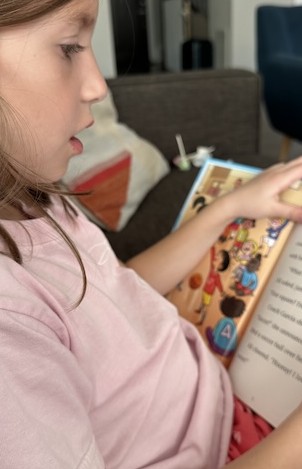Literacy Blogs
- All
- 3-cueing
- academic learning time
- academic vocabulary
- accommodations
- accountability testing
- Active View of Reading
- adolescent literacy
- afterschool programs
- alphabet
- amount of instruction
- amount of reading
- argument
- assessment
- auding
- author awareness
- automaticity
- balanced literacy
- beginning reading
- Book Buddies
- Book Flood
- challenging text
- classroom organization
- close reading
- coaching
- cohesion
- Common Core State Standards
- complex text
- comprehension strategies
- content area reading
- context analysis
- curriculum materials
- Daily 5
- decoding
- departmentalization
- DIBELS
- dictionary skills
- digital texts
- disciplinary literacy
- dyslexia
- early interventions
- effective teachers
- Emily Hanford
- executive function
- family literacy
- fingerpoint reading
- foundational skills
- graphic novels
- guided reading
- heterogeneous grouping of students
- homework
- improving reading achievement
- independent reading
- independent reading level
- informal reading inventories
- informational texts
- instructional level
- invented spelling
- jigsaw instruction
- knowledge
- leadership
- learning disabilities
- Lexiles
- linguistic comprehension
- listening comprehension
- literacy charities
- literacy policy
- literary interpretation
- main idea
- morphology
- motivation
- narrative text
- National Early Literacy Panel
- nonsense words
- oral language
- oral reading fluency
- paraphrasing
- Pause, Prompt, Praise (3P)
- personalized learning
- phonemes
- phonemic awareness
- phonics
- press and media
- principals
- prosody
- Readers' Workshop
- reading comprehension
- reading disabilities
- reading intervention
- reading levels
- reading models
- Reading Recovery
- reading research
- reading skills
- reading strategies
- reading to children
- reading wars
- reading-writing relations
- remedial reading
- rereading
- Response to Intervention
- Scarborough's Rope
- science of reading
- seatwork
- semantics
- sentence comprehension
- sequence of instruction
- set for consistency
- set for variability
- shared reading
- shared reading
- sight vocabulary
- simple view of reading
- Simple View of Reading
- small group instruction
- social studies
- sound walls
- Special Education
- speech-to-print phonics
- spelling
- stamina
- summarizing
- Sustained Silent Reading
- syllabication
- syntax
- syntax
- testing
- text complexity
- text interpretation
- text reading fluency
- text structure
- theme
- think-pair-share
- trauma
- visualization
- vocabulary
- word walls
- writing
- zone of proximal development (ZPD)
Don’t Confuse Reading Comprehension and Learning to Read (and to Reread)
Blast from the Past: This piece was first published on May 7, 2022, and was republished on October 25, 2025. The original posting explained the distinction between a comprehension effect and a learning effect. Recently, I published a book on “leveled reading” that addresses this difference more thoroughly (Shanahan, 2025). The failure to make a discernment between these two outcomes has led to many pedagogical failures. Given that, I thought this to be a good time to sharpen the points made here, providing greater clarity and some background information about the source of this unfortunate misunderstanding, along with some specific ...
Considering Running Records, and No, I Don’t Beat My Wife Anymore
Teacher question: I’m confused. I've understood your message that we should stop obsessing about deriving an independent or instructional reading level. But I’ve also read that you feel that there is a place for F&P style running records (many schools still use them!). If a running record is producing a reading level, isn't this going against the idea that we should do away with the instructional level? Aren't there other problems with these tests, too (design problems, large standard errors, etc.)? Shanahan responds: You have it right, sort of. I thought my position on this was adroit and artful and you seem to find ...
What Role Should Pictures Play in Teaching Reading?
Teacher question: In the current era of readily available teacher-created materials through open marketplaces, and given the critical importance of print materials for beginning readers—particularly for multilingual learners and students with disabilities—what does current research indicate are the best practices regarding the optimal amounts of extraneous visuals to truly support their literacy development effectively? Shanahan responds: I hope most teachers are not spending a lot of time “creating” instructional materials. Some do, of course, but they tend to be a tiny minority. I’d rather their time be spent on figuring out students’ learning needs. Of course, there are those cut-and-paste artists who create “new” ...
Disciplinary Literacy Goes to Elementary School
Blast from the Past: This blog first appeared on August 14, 2021, and was reissued with minor revisions on September 20, 2025. Reading education – like the lengths of skirts and the widths of neckties – tends to be trendy. That’s unfortunate for those kids who happen to be in school when phonics isn’t cool and learning styles are. I often reissue these entries when I sense renewed interest in a topic. This time it is just the opposite. I’m not hearing much interest in this lately, and I think this neglect is a serious problem for kids. Maybe this ...
Our Middle School Reading Scores are Dropping – Help!
Teacher question: Middle school reading scores are either stagnating or dropping in my state, and they are looking at things they can do to help students improve. I’ve read the materials on the need for kids to reach a certain level of decoding to succeed in the upper grades. What do we do from here? What interventions should schools/states add to help these kids catch up on what they missed? Shanahan responds: The most likely reason middle school scores are down in your state probably has little to do with phonics instruction. Most phonics is provided in grades K-2. Doing a better job with ...
Rejecting Instructional Level Theory
Blast from the Past: This blog first appeared as a series of articles (June 29-August 21, 2011), and this updated version was issued August 23, 2025. The original blogs were among the first to promote the idea of teaching reading with challenging text rather than “instructional level” text. At the time, this was new territory for me. As a teacher I taught with instructional level texts and as a professor I prepared teachers to do the same. In 2011, there was a paucity of research on the issue, but that is no longer the case. On September 12, my new ...
Modeling in Fluency Instruction
Teacher Question At our school, we test students oral reading fluency three times a year (aimswebPlus), and we teach fluency in both our Tier 1 and Tier 2 programs. I believe that I have a good understanding of how to teach fluency using repeated reading. However, one step in that process that I’m unsure of is modeling. How much fluency modeling should a teacher do and how is that best accomplished? Shanahan responds:Since the National Reading Panel (2000) determined fluency instruction to be beneficial, I’ve been queried often about it. Those questions have focused on text difficulty, amounts of fluency practice, role ...
What is the Science of Reading?
Blast from the Past: This entry first appeared on November 6, 2021 and was re-issued on August 2, 2025. We’re at the beginning of the 2025-26 school year. Reading scores haven’t recovered from the COVID debacle, too many kids and teachers are missing school, and many states have adopted laws or policies aimed at beefing up decoding instruction. Concerns about the “science of reading” continue to arise in media coverage and policy debates, so this earlier published article still has relevance. This blog argues that the reform of reading instruction should depend on instructional studies rather than on computer simulations ...
Print-to-Speech or Speech-to-Print? That is the Question Redux
Blast from the Past: This piece first appeared on June 4, 2022, and was re-released on July 26, 2025. I continue to feel strongly that speech-to-print is the best way to go when it comes to beginning phonics instruction, yet as this entry admits – that is not yet proven. That hasn’t changed over the past few years, and yet data continue to accumulate on that side of the ledger. For example, Yan, et al. (2024) demonstrate the importance of a neurological speech-to-print convergence in reading, something that suggests the potential value of such instructional approaches. Likewise, there is more ...









